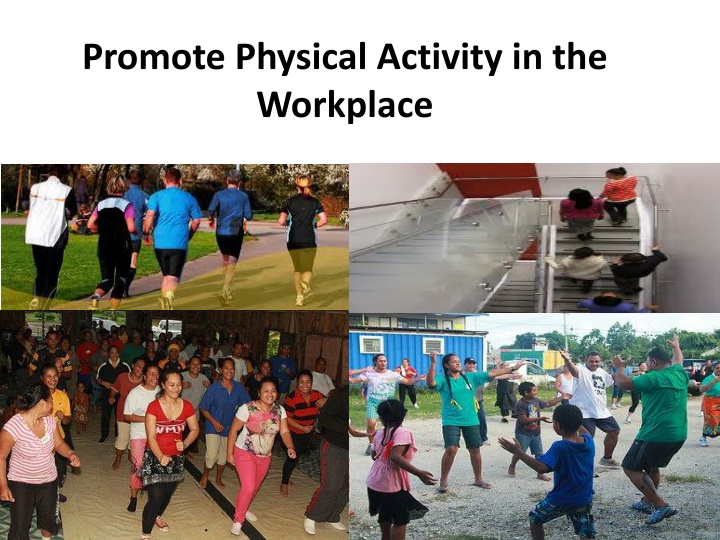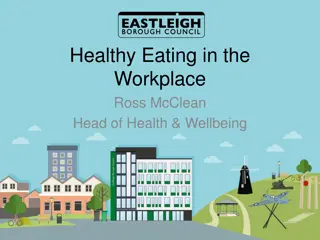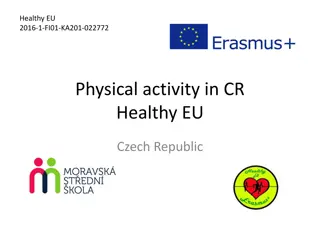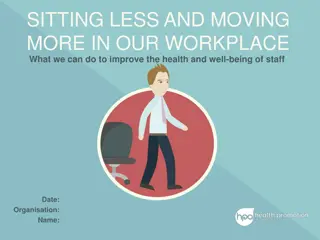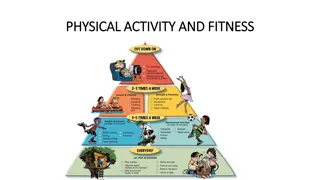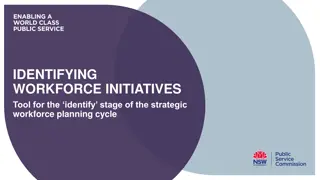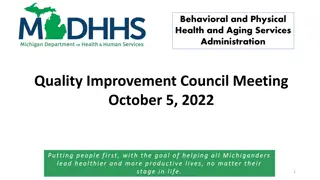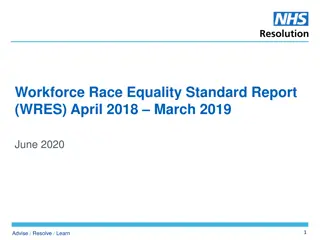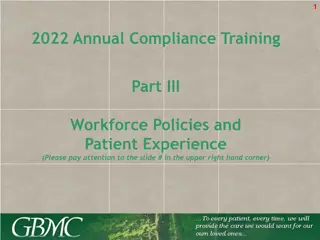Promoting Physical Activity in the Workplace: A Path to Healthier and More Productive Workforce
The workplace plays a crucial role in encouraging physical activity to combat sedentary lifestyles prevalent in island communities. Access to daily exercise is vital to prevent non-communicable diseases linked to inactivity. Engaging in group activities and implementing interventions like flexible schedules and fitness facilities can improve employee health and productivity.
Download Presentation

Please find below an Image/Link to download the presentation.
The content on the website is provided AS IS for your information and personal use only. It may not be sold, licensed, or shared on other websites without obtaining consent from the author.If you encounter any issues during the download, it is possible that the publisher has removed the file from their server.
You are allowed to download the files provided on this website for personal or commercial use, subject to the condition that they are used lawfully. All files are the property of their respective owners.
The content on the website is provided AS IS for your information and personal use only. It may not be sold, licensed, or shared on other websites without obtaining consent from the author.
E N D
Presentation Transcript
Promote Physical Activity in the Workplace
What you should know The environments in most island communities no longer promote physical activity. Most schools and workplaces do little to encourage or value movement. Sedentary lifestyles often result in much poorer health due to NCDs. Getting people moving at work will result in a healthier workforce. A healthier workforce can be more productive, with fewer sick days and more revenue or products generated.
Ensuring that people have access to daily exercise must be a priority.
Did you know? Studies from a several Pacific Island countries and territories show that between 41% and 62% of adults lead completely sedentary lifestyles. A sedentary lifestyle is closely linked to obesity, diabetes, and heart disease.
Did you know? Engaging in physical activity in groups is effective in increasing levels of physical activity
Examples of Interventions in the Workplace Offering healthy food options in cafeterias, vending machines and at company-sponsored events; Introducing point-of-decision signs encouraging stairway use; Allowing flexible work schedules to accommodate physical activity during the work day; Providing reimbursement for use of community fitness centers; and Building or opening up facilities and areas that can be used for physical activity and exercise, such as on-site fitness centers, walking paths, and bike trails.
Did you know? Workplace physical activity programs have shown potential to increase employee productivity and improve health outcomes
Did you know? Workplace programs, in spite of their variability in terms of comprehensiveness, intensity, and duration, achieved long-term behavior change and risk reduction among workers.
What are policies that can help improve the built environment? A Successful Example: Case Study: CDC StairWELL Project In 1998, CDC's Division of Nutrition, Physical Activity and Obesity conducted a study to see if making physical changes to a stairwell in the Atlanta-based Koger Center Rhodes Building would motivate employees to use the stairs.
What are policies that can help improve the built environment? A Successful Example: Case Study: CDC StairWELL Project Over 3 years, changes to the stairwell were made which included painting and carpeting, framed artwork, motivational signs, and music. Infrared beams were used to track the number of stair users. The data suggest that physical improvements, motivational signs, and music can increase stairwell use among building occupants.
What are policies that can help improve the built environment? A Successful Example: Case Study: A workplace health promotion program in Vanuatu Strong gender roles can result in disadvantages for women in relation to sport and recreation activities. Wokabaot Jalens was a health intervention which was created for women in Port Vila, Vanuatu. The program is part of the Walk for Life government based healthy workplace initiative. Employees were encouraged to participate in physical activities every Wednesday.
What are policies that can help improve the built environment? Case Study: A workplace health promotion program in Vanuatu The initiative began in 2011 and has shown an increase in about 2075 steps/day. Participants had designated walking captains, were given walking maps, educational information and a pedometer. A Successful Example: Physical activity behavior increased and waist circumference decreased. Several participants experienced significant health benefits such as weight loss, reduced fasting blood sugar and enhanced self-esteem.
Take Action and Make a Difference! Form walking groups Form lunchtime walking groups with your co- workers. Instead of eating at your desk spend time eating together and then walking together outside. Encourage others to join you!
Take Action and Make a Difference! Take the stairs! Instead of using the elevator, take the stairs! Encourage others to take them with you!
Take Action and Make a Difference! Organize sports teams Engage in competitive sports with your co- workers!
Who can I contact for more information? Adrian Bauman Boden Institute of Obesity, Nutrition and Exercise and Prevention Research Collaboration University of Sydney Sydney, Australia Email: adrian.bauman@sydney.edu.au
